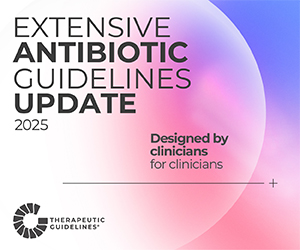Royal Flying Doctor Service (RFDS) flight nurse Susan Markwell says the job demands a broad range of professional skills to tackle complex primary healthcare emergencies and the ability to deal with the unexpected.
Last September, Susan was awarded the prestigious Aurora Award at the 37th CRANAplus annual conference for her contribution to remote health and the wider nursing profession through her role with the RFDS.
The RFDS provides primary healthcare and 24-hour emergency service to Australians living, working, or travelling in rural and remote parts of the country.
Services include telehealth consultations, fly-in fly-out GP and Nurse Clinics, mobile dental services, transferring non-critical patients from small hospitals in rural and remote areas to metropolitan areas for more specialised care, and emergency evacuations for people who are seriously ill or injured.
CRANAplus’ Aurora Award recognises individuals who demonstrate excellence in remote health practice and those who have been instrumental in driving change to improve remote health and whose vision has contributed to a better future for people living or working in rural and remote.
Susan described the award as the most humbling honour of her career.
“As part of a team and unique service, being able to get to and provide the best possible healthcare and support to people and staff in rural and remote areas has relied on the dedication of all of us,” she said.
“As a FIFO (fly-in, fly-out), the continuity with the people of our region gives credibility to the service. This credibility helps to establish patient rapport and has stood me in good stead in times of need.”
The ANMJ spoke to Susan about her career as an RFDS flight nurse and her enduring passion for remote health.
What drew you to flight nursing and improving healthcare in rural and remote?
In 1987, I was seconded from the Division of Child Health (Brisbane) to work with the RFDS in Charleville, a town 747 kilometres west of Brisbane.
Until then, I had not realty been west of the Great Dividing Range. The first time I drove out in my little Mazda 323, it took me three days for the 11 hour journey.
The country lifestyle, people and diversity were fascinating. That was where my passion for rural nursing developed. As the only nurse working in isolation, the work was 24/7, on call at Charleville, using initiative to organise the clinics and arrange patient evacuations.
From 1990, having moved to Cairns RFDS in a child health and evacuation role servicing areas such as Far North Queensland and Cape York Peninsula, my passion grew. This area included four large Indigenous communities.
Initially, there was just so much to do with so little time. Eventually, with greater staff numbers and improvements to equipment, some of those needs have been adequately addressed.
The changes and improvements for those for whom a service has been provided spurs me on.
What does your current role entail?
You know when your shift starts, however, you never really know when you finish or where you will be going.
As a flight nurse, I do emergency evacuations as part of the Cairns RFDS. The roster is based on 12-hour shifts, either day or nights. No day is typical.
Generally, the shift will include much needed repetitive checking. We rely on everything being there, full stocked, in date, in operational order and charged when needed.
In the RFDS Queensland Section bases of Charleville, Mt Isa and Cairns, RFDS Medical Officers (MO) have thousands of telephone consultations with patients per year. These MO’s then schedule and prioritise flights.
My role with the MO is to discuss the flight and purpose. About 65% of the flights are “nurse only”. The nurse and pilot take off to collect one or more patients from the destination. This can change with little notice. Another phone call from the MO on duty may divert that flight to another patient with a higher priority.
What is the most unique part about nursing at altitude and what skills must flight nurses possess?
Flexible, dynamic and professional is how I would describe a flight nurse’s characteristics.
Being in the air is unique in nursing. There are the added complexities of a confined pressurised space with limited satellite communications. Time is limited and decision-making is often performed with few resources.
A strength, in my view, is the ability of flight nurses to be organised and forward thinking and be able to juggle numerous balls at one time.
To be called upon to use all professional skills, and some ingenuity, while maintaining dignity and purposefulness, makes this job one of the highest order.
What are the biggest challenges and rewards?
The 16 years I spent as a Senior Flight Nurse in Cairns was challenging. Knowledge and skills maintenance, and dealing with a range of people of diverse backgrounds and across a huge area was also a challenge.
Maintaining skills across multiple areas requires diligence. However, being prepared for most situations is rewarding.
What career highlights stick out during your time with the RFDS?
The highlights are the people, patients and those with whom I work.
Back in 1988, I was part of the charity winning team of the RFDS Queen of the Outback Quest, raising $87,000 with my committee.
Later in 2011, meeting Queen Elizabeth II at the opening of the new Beechcraft 200s and PC12 aircrafts was a career highlight.
Development and expansion of RFDS Queensland services with seven medical bases, one dental and a mental health base, demonstrates the strength, flexibility and objects of the RFDS as remaining important.
Projects in which my role has been instrumental include “Best for the Bush” where RFDS could tailor the service delivery to fit different models.
Our region also started numerous play groups, field days and had achieved some of the highest rate of immunisation in Australia.
Working rural and remote on the Cape and Cape York, what healthcare improvements were you able to witness and unfold and what challenges remain?
Child health, over my 29 years, and in the rural regions, has improved significantly.
Areas of improvement include better conditions for Indigenous Health workers, high rates of immunisation, and increased provision of child health, general practice, chronic disease and mental health services.
The role of the nurse to advise, empower and educate families on health has also been significant.
The social determinants of health remains a hurdle. The increasing mental health and chronic disease in our Indigenous populations is significant and a challenge.
What advice do you have for aspiring flight nurses?
This is one of the best nursing jobs if you want to work hard in a challenging and exciting environment of constant change.
Attaining the necessary qualifications can be daunting but definitely rewarding.








